Hyenas
We’ve been told that hyenas are highly social animals that live in huge packs, kill more than they scavenge, and are led by strong, female leaders. But these hyena “facts” are half-truths at best, so let’s set the record straight.
Hyenas: Life of a Scavenger
Christine Drea, anthropologist at Duke University, notes: “Any self-respecting carnivore would scavenge if given the opportunity.” It’s okay to admit that hyenas scavenge, and really it’s impressive they are able to do so! Scavenging another’s kill often means chasing off a larger predator or eating meat that is old, rotten, and possibly full of disease. Hyenas are great hunters, and spotted hyenas have been shown to take down just over 50% of their meals. But there’s nothing wrong with stealing someone else’s hard work every once in awhile.
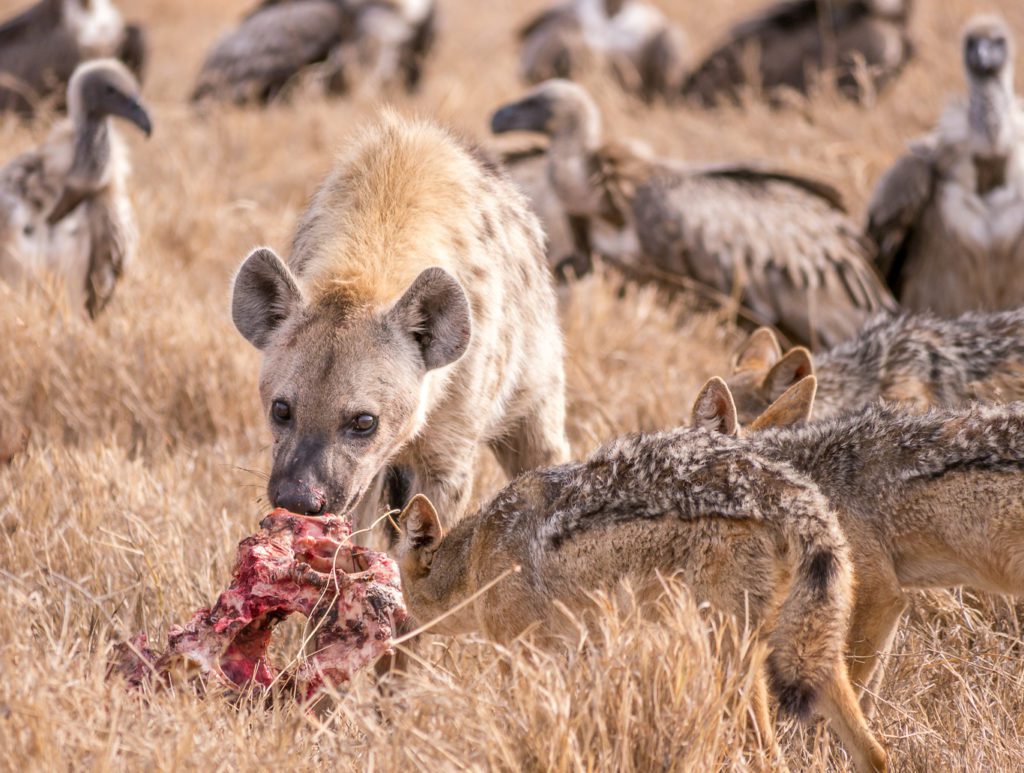
One of the biggest misconceptions around hyenas is that the facts that we all know and love about them mostly reference just one species: the spotted hyena. But did you know there are actually four species of hyena? The spotted hyena, striped hyena, brown hyena, and the small aardwolf.
The Four Species of Hyenas
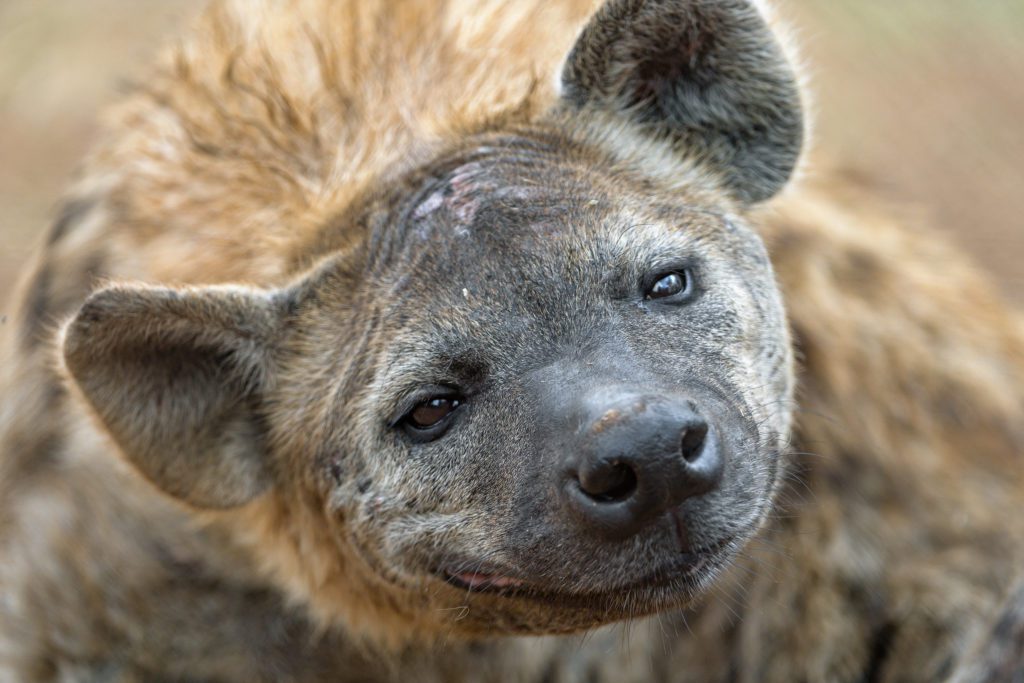
Spotted hyenas are by far the most well known. They are featured in movies, shows, and most documentaries covering hyenas or the wide plains of Africa. Working together, spotted hyenas are capable of taking down prey much larger than themselves. They can also eat up to 25% of their body weight in one sitting, and will eat every scrap of meat, organ, and bone.
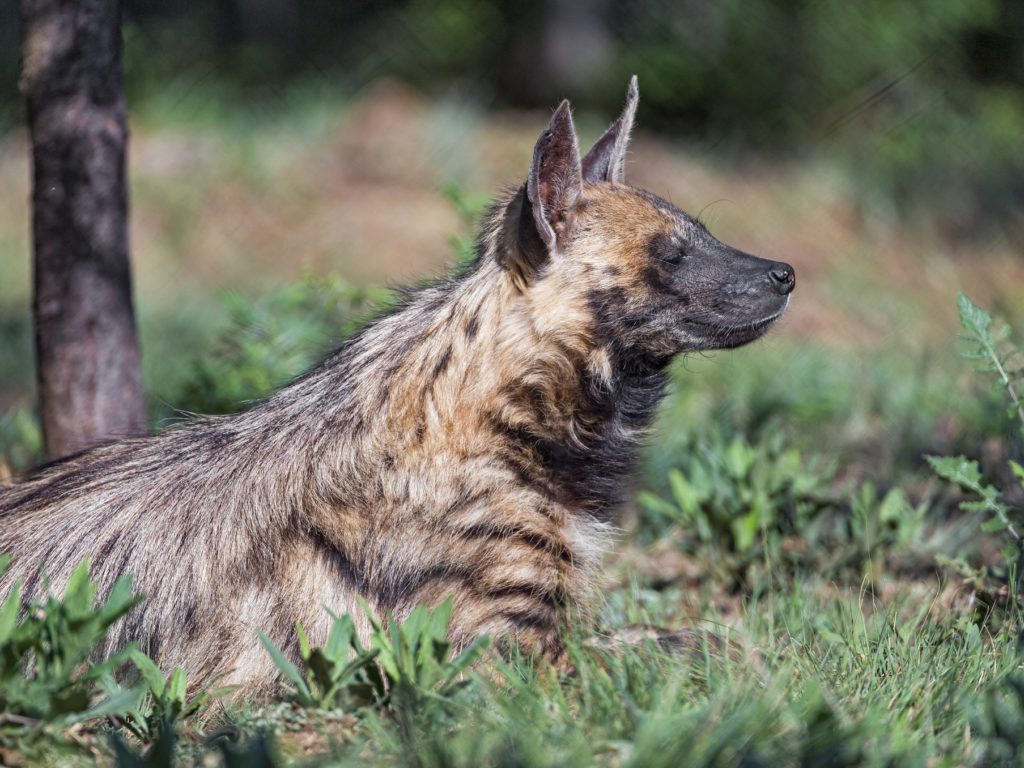
Primarily a scavenger, the striped hyena lives in Northern Africa, the Middle East, and into most of India. They often live alone, in pairs, or in very small clans. Much of their range overlaps with wolves, which they actively compete against for food. One strange instance in 1994 found a single striped hyena seeming to join a wolf pack.
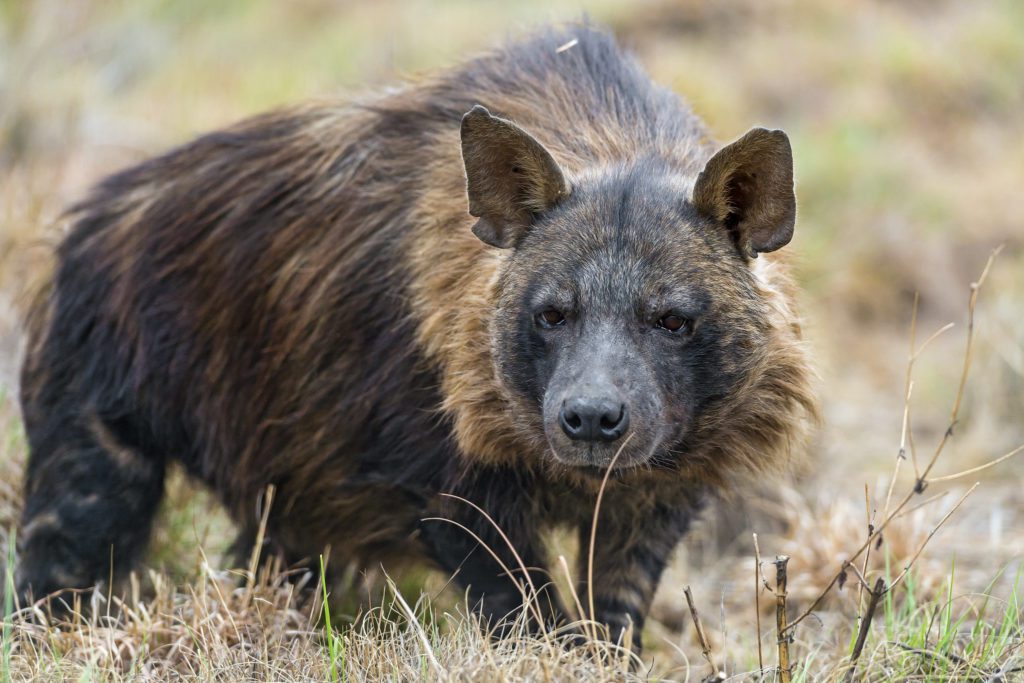
The brown hyenas live in some of the driest parts of Southern Africa and will commonly eat fruit to help stay hydrated. Brown hyenas live in small clans of usually less than ten individuals but will have fairly large litters that they are extremely successful in raising.
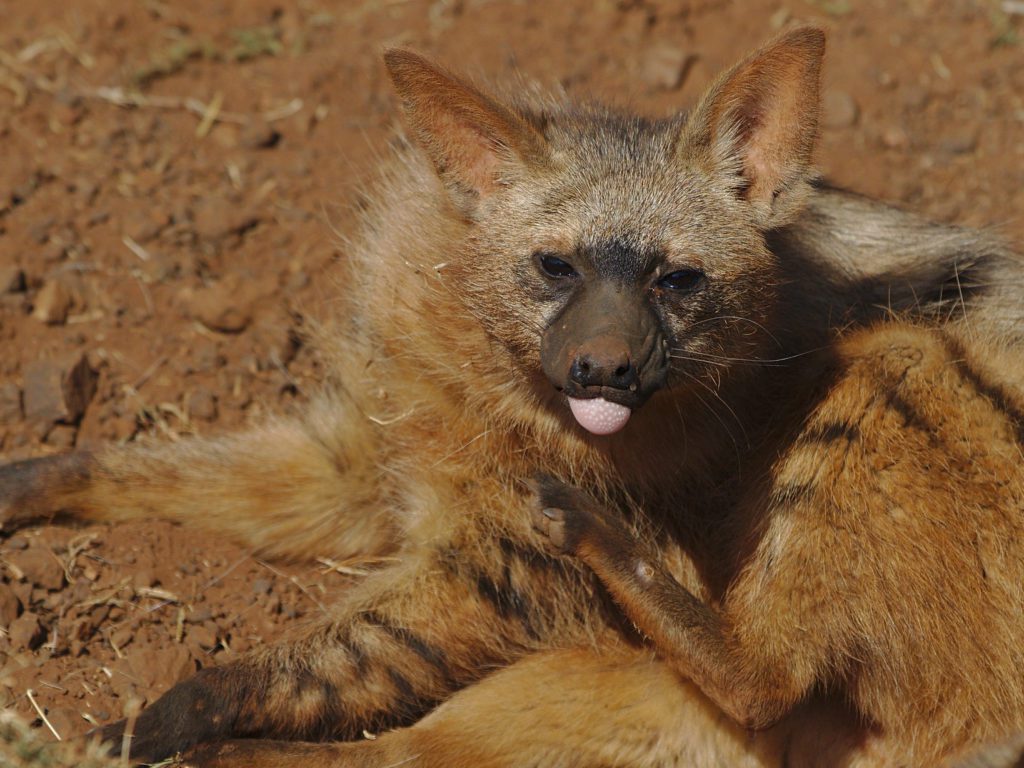
Perhaps the most unique of the hyenas, the aardwolf is quite small, and has a highly specialized diet consisting not of rotten flesh, but of insects. Their long, sticky tongue and muzzle are perfect for lapping up termites. Unlike aardvarks, which have powerful legs and claws to tear into termite mounds, aardwolves simply eat termites off the ground.
Let's address the pseudopenis...
If you are a nature nerd who knows a lot of fun facts, you probably know that female spotted hyenas have very enlarged genitalia that resembles a male’s penis. If you didn’t know that, well, now you do! It’s always fun to learn new things.
There’s a lot of myth, legend, and straight up lies surrounding this unique piece of genitalia. Some benefits to having a penile-clitoris include: easier social communication (due to exposed genitals), lower siblicide and infanticide rates towards females (since they look like males), and having choice during reproduction (not easy to access unless she is impressed). The truly horrible downside is that this pseudopenis actually is also the birth canal, which takes a harsh 180 degree bend within the pelvis. Mortality rate for first-time mothers is estimated at 60%.
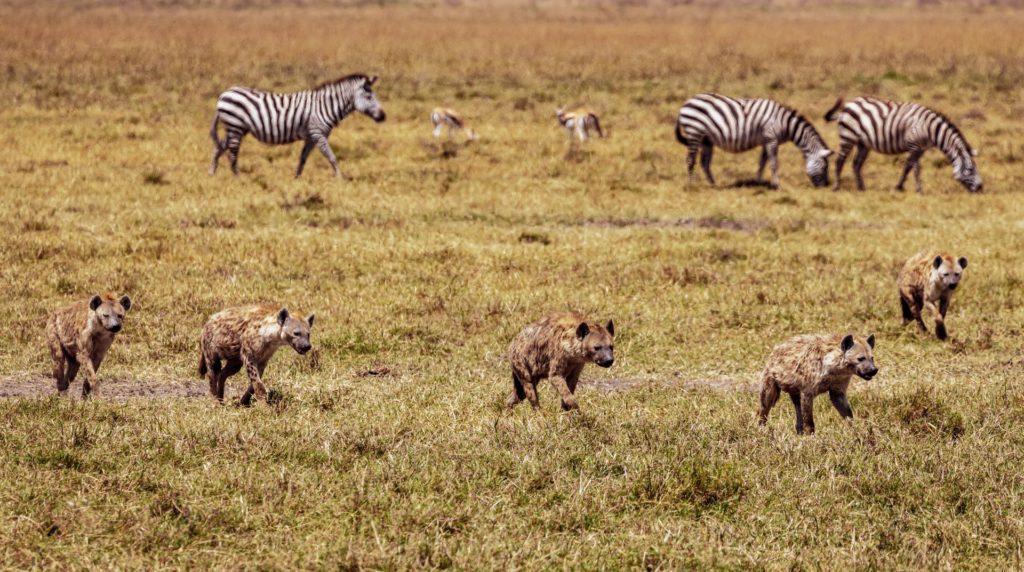
Let’s be clear about one thing though: this pseudopenis doesn’t give female spotted hyenas magic powers just because now she looks like a male. It’s not even the extra testosterone or progesterone she has. It’s her friends that give her power. While in many species genetics rule it’s been found that for spotted hyenas it’s your friends that determine your social rank. When looking at adopted cubs, their rank almost always followed their adopted mother’s rank, not their genetic mother’s.
You’ll likely never look at a hyena again, and we’re not sorry. For even more PG-13 details on hyena genitalia and hyena butter make sure to listen to the full podcast episode. And remember: hyenas are savage stinky scavengers and that’s a-okay.
Sources/Further Reading:
- Frank, Laurence G.; Weldele, Mary L.; Glickman, Stephen E. (1995). Masculinization costs in hyaenas. , 377(6550), 584–585. doi:10.1038/377584b0
- Carin Bondar. 2016. For Some Species, the Girls Come With Boy Bits. Nature, PBS.
- Höner, O., & Davidian, E. Friends over muscles: How female hyenas came to dominate males. Ngorongoro Hyena Project.
- Twin rivalry. Ngorongoro Hyena Project.
- HOLEKAMP LABORATORY website. Spotted hyena research lab.
Did you spot an error or have questions about this post? Email Nicole Brown.
